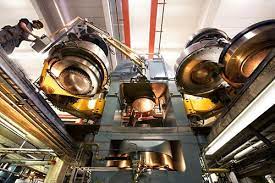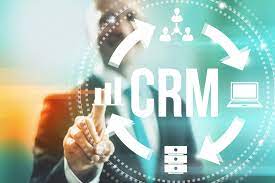Want help to write your Essay or Assignments? Click here
The Use of Diamond in Engineering
Introduction
Traditionally, the classification of ceramics is done on the premise that they are materials made of clay. However, due to the expansion of the field of ceramics, nowadays they can be defined as non-metallic, inorganic materials that are treated by heat when being processed or used (Marinescu, Tönshoff & Inasaki, 2010; Moore, 2012; Pierson, 2013). As a result, they tend to be hard, brittle and inert and have covalent or ionic bonding.
According to Neves & Nazaré (2011) diamond fits this description of ceramics by meeting all of the outlined criteria. Diamond is purely made of carbon atoms that are crystallised to form a cubic structure whereby the linkage between each carbon atom is through a rigid and strong chemical bond to other four carbon atoms. Harlow (2008) states that until the 1950s, the availability of diamond was in quantities that were relatively small and at prices that were fairly high.
However, these challenges prompted the development of new methods and technologies for making synthetic diamonds, which has led to various new diamond-based products with diverse applications in engineering (Marinescu, Tönshoff & Inasaki, 2010).
The use of diamond in engineering has been attributed to its unique combination of properties, such as highest thermal conductivity and hardness among any other material that is known, a large optical band gap, high electrical resistivity, a high transmission, low adhesion and friction, good resistance to corrosion as well as a thermal expansion coefficient that is extremely low (Prelas, Popovici & Bigelow, 2008; Yarnell, 2014). As a result, these properties have made diamond to be among the most desirable industrial material in a broad range of uses or applications in chemical, electrical, thermal, optical, and mechanical engineering.
Want help to write your Essay or Assignments? Click here
According to Feldman & Robins (2011) in most cases of the usage of diamond in engineering, the surface of a diamond element or component must have a superior finish, usually in terms of surface roughness ranging within measures of nanometres. Nevertheless, as a result of its chemical inertness and extreme hardness, the process of polishing diamond and its subsequent composites has always been sophisticated and lengthy (Chen & Zhang, 2013; Rastogi & Hack, 2014).
According to Field (2012) the use of diamond as an engineering material has been evident a wide range of industries such as car manufacturing, aerospace, oil and gas as well as mining among many other customised uses or applications in engineering. Due to diamond’s thermal conductivity, wear resistance and extreme hardness it has actually become an ideal choice material for use in engineering for extreme applications and conditions (Servin, Quinoga & Padilla, 2013).
Based on the title of the essay, the method chosen to tackle the essay was to complete it as a written survey of the existing information in the form of a concise report. In order to complete the report for this basic survey, the existing information concerning the use of diamond in engineering including a brief background history, materials sources and selection, existing materials and technology, current and state of the art uses or applications of diamond in engineering as well as suggestions for future developments.
Sources of Diamond
Nowadays, diamond is usually found from a number of sources mainly in form of natural or synthetic diamond. The main sources or methods of synthesising diamond are discussed below as follows:
Natural diamond: According to Chen & Zhang (2013) each year across the globe there are 20 tonnes of naturally occurring diamond which are mined. Almost a half of this quantity is of industrial quality, while the other half is of gem quality (Chen & Zhang, 2013).
Single crystal synthetic diamond: Efforts towards creation of diamond in a synthetic manner can be traced back many years and have led to commercial availability of gemstone quality diamond by treating carbon-based materials with high pressure and high temperature (Field, 2012; Yarnell, 2014). According to Welbourn (2006) every year there are approximately 90 tonnes of diamond produced using the high pressure and high temperature (HPHT) method.
For instance, the production of most of the industrial quality diamond is usually from graphite at temperatures of 1400 to 1600°C and pressures of 4.5 to 6.0 GPa with the assistance of a transition metal catalyst that is always molten (Prelas, Popovici & Bigelow, 2008). The diamond produced through this method is usually cheaper compared to natural diamond (Moore, 2012; Pierson, 2013; Welbourn, 2006).
Polycrystalline diamond (PCD): According to Sexton & Cooley (2009) this type of diamond is usually formed by cementing grains of diamond together under conditions of high pressure and high temperature where the used bonding agent is a metal or by sintering utilising Boron Carbide as an aid for the sintering.
PCD is usually superior compared to natural diamond in a number of ways including its high wear resistance, isotropic characteristics as well as cost effectiveness. Welbourn (2006) notes that PCD addresses many weaknesses of natural diamond such as high cost, high variability, uneven wear, and large cleavage planes.
Vapour phase deposition diamond: This type of diamond is in the form of thin diamond films and is produced through both physical vapour phase deposition (PVD) and chemical vapour deposition (CVD). According to Koizumi, Nebel & Nesladek (2008) every year about 10 tonnes of diamond films are produced through vapour phase deposition. However, compared to naturally occurring diamond their cost is higher by above four times, even though despite their high cost their application can be economically justified due to the fact that, irrespective of their usage in thin film form they usually result to significant differences in component properties (Koizumi, Nebel & Nesladek, 2008).
Moreover, the availability of low-pressure and high-temperature conditions through CVD has enabled diamond coatings to be grown using a gas-feed mixture of methane and hydrogen. In addition, there can be tailor made growth conditions to enable production of nano- or microcrystalline dopants and morphology such as the addition of boron to induce conductivity (May, 2010, Pan & Kani, 2005; Stallcup & Perez, 2011).
Want help to write your Essay or Assignments? Click here
Key Properties of Diamond
The actual uses or applications of diamond in engineering are attributed to its key properties which provide a desirable combination of mechanical, physical and chemical properties as discussed below:
Extreme Hardness: Diamond is without any doubts the hardest material that is known by man surpassing other comparatively hard materials such as steel, silicon carbide, tungsten carbide, and silicon nitride (Prelas, Popovici & Bigelow, 2008). In fact, this property makes it ideal use in engineering applications requiring greater durability and toughness (Yarnell, 2014).
For PCD and CVD or PVD, this hardness is attributable to diamond-to-diamond particles that are sintered in a structure that is coherent through a HPHT process as well as random orientation of diamond-to-diamond bonds for the purpose of eliminating weak planes thereby preventing tool cracking (Welbourn, 2006).
Resistance to Harsh Environments: According to Feldman & Robins (2011) diamond material is significantly resistant to erosive and corrosive environments and also it is resistant to corrosion from all bases and acids, which makes it easy to operate in any process or chemical fluid environment. Through the combination of hardness and fracture toughness for improved durability, diamond handles loads of extremely high capacities (Harlow, 2008; Prelas, Popovici & Bigelow, 2008; Yarnell, 2014). As a result, it usually offers coefficient of friction that is significantly lower compared to that of Teflon, steel and tungsten carbide (Moore, 2012).
Long Life and Low Wear: Harlow (2008) states that diamond is a super-hard engineering material appropriate for use in environments that are significantly abrasive thereby making it ideal for producing drilling as well as cutting tool material. Also, due to its coefficient of friction which is considerably low, diamond has superior wear resistance which is attributed to its ultra-long tool life as well as higher fracture toughness compared to silicon carbide and silicon nitride (Coelho et al., 2012; Yarnell, 2014).
Highest Thermal Conductivity: It is undoubtedly evident that there no other engineering material known with higher thermal conductivity than diamond (Marinescu, Tönshoff & Inasaki, 2010; Wei et al., 2013). This high thermal conductivity is attributed to the reduction of the localisation of temperature extremes that causes material degradation (Wei et al., 2013).
As a result, diamond disperses heat better than comparable engineering materials such as to silicon carbide, steel, silicon nitride, tungsten carbide, and even copper (May, 2010). According to Moore (2012) the low thermal expansion coefficient of diamond is attributed for its excellent use in making heat sinks as well as applications in harsh environments.
In addition, the uses or applications of diamond in engineering are also attributable to some of its other properties such as its high electrical resistivity, broad optical transparency ranging from ultra violet region to infra red region as well as biological compatibility (Harlow, 2008; Prelas, Popovici & Bigelow, 2008; Yarnell, 2014). These properties enable diamond to be applied for specific uses in electrical, optical and medical engineering respectively.
Want help to write your Essay or Assignments? Click here
Furthermore, diamond has some limitations which are attributable to a number of its mechanical and physical properties which are listed in Table 1 shown below. For example, diamond is Meta stable at room pressure and temperature, which makes it to form a black coat upon heating to above 600°C in oxygen and also reverts to graphite upon heating in nitrogen to about 1500°C (Wei et al., 2013).
According to Lee & Novikov (2015) diamond reacts with strong carbide to form metals (i.e. zirconium, tantalum and tungsten), and also it dissolves in chromium, cobalt, nickel, iron, manganese, as well as the platinum group metals. The typical mechanical as well as physical properties of diamond are listed in Table 1 below.
| Table 1. Typical mechanical and physical properties for diamond Property Density (g/cm3) 3.50 Young’s Modulus (GPa) 1050 Bend Strength (MPa) 850 Fracture Toughness K1c (MPa.m 0.5) 3.5 Hardness (GPa) 45 Thermal Expansion Coefficient (x 10-6/°C) 1.1 Coefficient of Friction 0.02 Electrical Resistivity (ohm.cm) >1013 Thermal Conductivity (W/mK) 400 Decomposition Temperature in nitrogen (°C) 1500 |
Present/Current State of the Art Applications or Uses of Diamond in Engineering
The use of diamond and its composites whether CPD, CVD or PVD are closely linked to the extreme physical properties of diamond discussed in previous section. A number of the applications of diamond have already found their way into the marketplace, including some which are more sophisticate such as those concerning applications in electronics, particle detection, optics as well as thermal management.
Until recently, wide-scale usage of diamond in engineering had been hindered by high cost and its availability in small quantities, but this has already been overcome by synthetic production of other forms of diamond including single crystal diamond, CPD, CVD or PVD (May, 2010).
In particular, a wide-scale use of the two superior synthetic composites of diamond such as CVD and PVD was mainly prevented by economic factors until recently because the coating films were typically too expensive in comparison with other alternatives that exist. However, due to the standardisation of higher power deposition reactors, there has been significant reductions in the cost for 1 carat (0.2 g) of CVD and PVD diamond over the past one decade, and this will make the use of both CVD and PVD diamond which have superior physical and mechanical properties much more economically viable, and allow exploitation of their vast array of outstanding physical and mechanical properties in a wide range of engineering uses or applications. Specific uses of diamond in engineering are discussed below:
Want help to write your Essay or Assignments? Click here
Cutting tools
The properties of diamond including extreme hardness and wear resistance, makes it highly appropriate for use to cut tools for machining composite, non-ferrous metals, chip-board and plastics materials (May, 2010). In fact, industrial quality diamond has over the past five decades been used for cutting tools, and until today it remains a useful application in engineering (Moore, 2012).
According to Lee & Novikov (2015) this process involves either gluing the diamond grit to a tool that is suitable (e.g. drill bits, lathe tools, saw blades) or through consolidation of the diamond grit with a binder phase that is suitable (e.g. SiC or Co) to make a tough, durable and hard composite.
Thermal management
Thermal management in heat spreaders, substrates, and heat sinks are some of the uses or applications of diamond in electrical engineering because it uniquely combines high thermal conductivity and electrical insulation (Wei et al., 2013). According to Neves & Nazaré (2011) the use of diamond in electrical engineering include applications such as heat sinks for laser diodes, hybrid circuit packages, small microwave power device, printed circuit boards and integrated circuit substrates. Higher operating speeds are enabled by the use of diamond as devices can be packed more compactly without overheating (Wei et al., 2013).
Optics
Due to the optical properties of diamond, it is beginning to be used in optical components, especially as a protective coating as an infrared window during harsh environments (Mildren & Rabeau, 2013; Zaitsev, 2011). Conventionally, infrared materials within the wavelength range from 8–12 µm (such as ZnSe, ZnS and Ge) are brittle and easily damaged, and a thin layer of CVD diamond film with high durability, transparency, and resistance to thermal shock is ideally used to protect them (Rastogi & Hack, 2014; Servin, Quinoga & Padilla, 2013;Walker, 2009). An example of a diamond coated optical fibre can be seen in figure 1.
| Figure 1. A diamond coated optical fibre. |
Semiconductor Devices
Diamond has an electronic structure with a wide band gap that makes it to be used as a semiconductor (Pan & Kani, 2005; Yarnell, 2014). However, prior to wide-scale exploitation of diamond coatings in the area of semiconductors there is need to address the concern of how to effectively dope the material as well as the growth of either highly oriented films or a single crystal (Wei et al., 2013).
According to Yarnell (2014) active devices made from boron doped (p-type) films subsequent to growth on diamond substrates operates at temperatures > 500°C in comparison with a maximum temperature of 200°c for gallium arsenide and silicon devices to operate. As a result, the use of diamond and its composites in this area includes high temperature integrated circuits; very high power transistors; radiation hardened integrated circuits as well as piezoelectric devices (Wei et al., 2013).
Electrochemical sensors
According to Prelas, Popovici & Bigelow (2008) doped CVD diamond films have been used for electrochemical uses or applications, particularly in corrosive or harsh environments. When diamond electrodes made through boron-doping CVD diamond films are conducted, a significant potential window in water is observed compared to Pt often to make electrode materials because it dissociates water at electrodes of higher potentials leading to unwanted evolution of oxygen and hydrogen (Pierson, 2013; Wei et al., 2013). For electrodes made from diamond, there is much slower rate of hydrogen gas evolution, allowing the use of much higher electrode potentials (Pierson, 2013).
Want help to write your Essay or Assignments? Click here
Composite reinforcement
There has been fabrication of diamond fibres and wires, which are exceptionally stiff for their weight (Neves & Nazaré, 2011). With increased growth rates to levels that are economically viable, such diamond fibres are used as reinforcement agents in metal matrix composites to allow manufacture of stiffer, stronger and lighter load-bearing structures (Sexton & Cooley, 2009). Two-dimensional diamond fibre and Hollow diamond fibres weaves or matting have already been developed and have been used in engineering as the basis of smart composite structures (Neves & Nazaré, 2011).
Particle detectors
One area where diamond has gained considerable usage, especially the CVD diamond films is as a ‘solar-blind’ detector for high energy particles and ultraviolet (UV) light. Diamond UV detectors with high-performance are in existence and other high energy particles, including neutrons and alpha- and beta-particles can be detected using diamond detectors (Feldman & Robins, 2011). Moreover, since the response of diamond and human tissue to X-rays and gamma rays damage is similar, this means diamond may be used in medical and chemical engineering to measure the dose of radiation exposure (May, 2010).
Want help to write your Essay or Assignments? Click here
Suggestions for Future Research and Developments
Despite minimal attention in the use of diamond in engineering in the past, the past few decades have shown a clear upturn in interest on research and new uses of diamond and its synthetic composites. The existing information indicate that use of diamond in engineering is on the brink tremendous expansion across diverse engineering fields such as quantum computing, catalysis, formation of composites and hard coatings or films, polishing as well as seeding of substrates for CVD diamond growth (Greentree et al., 2006; Wrachtrup & Jelezko, 2006).
In particular, polishing of diamond materials has the potential of providing a state of the art analysis, both experimentally and theoretically concerning most commonly utilised techniques to polish mono or polycrystalline diamond as well as CVD diamond films, including high energy beam, mechanical, thermo-chemical, dynamic friction, chemo-mechanical and other polishing techniques (Greentree et al., 2006; Wrachtrup & Jelezko, 2006). Hence, it is imperative to carry out extensive research on these issues in order to identify specific areas for new developments including coming up with new polishing mechanisms, material removal rate as well as possible modelling through which new uses of diamond and its composites can be highlighted.
Suggestions for future research and developments in the field of polishing of diamond materials will be focused on hard materials development in the field of precision manufacturing. In addition, new innovative and creative ideas on the application of diamond technology in future to develop solid state and vacuum microelectronics, electric power devices, MEMS, sensors and micro-sensors (Wrachtrup & Jelezko, 2006).
This requires more attention to be directed into the research and development micro-devices by conducting modelling, design, development, characterisation, fabrication as well as testing of devices made from diamond. Furthermore, as more interest continue to rise in the field of nanotechnology, the role of nanodiamond (ND) in the future development of quantum computers is imperative for consideration (Lee & Novikov, 2015).
This possible future development will be achieved through extensive research and is attributable to the desirable properties of the (N–V) − defect centre, which serves as a single-photon source that is photostable, and allows this centre’s usage as a quantum bit (solid-state room temperature qubit). In particular, significant research is currently in progress to address the properties and structure of the (N–V) − centre, so that it can be used in quantum computing (Greentree et al., 2006; Lee & Novikov, 2015; Wrachtrup & Jelezko, 2006).
Want help to write your Essay or Assignments? Click here
Conclusion
Despite the rapid and significant progress made over the past one decade in the use and application of diamond and its composites in engineering, the matching commercialization of some amazing diamond composite materials such as CVD and PVD diamond films has not been achieved.
However, as the use of diamond and its composites continue to expand due to reducing costs which is attributed to standardisation of production methods; researchers and diamond technology and engineering industry currently emphasise on the development of methods aimed at scaling up the diamond composites synthesis processes as well as reducing synthetic diamond production costs in order to make diamond the preferred engineering material not only due to its superior properties but also because its economically viable.
Considering that the dream of making diamond the ultimate material for use in engineering has not yet been achieved, more research is required to address this challenge. However, diamond and its composites has been used in engineering to develop some devices which have already found their way to the marketplace, such as diamond windows, cutting tools, diamond heat spreaders as well as SAW filters. In the near future, appearance of diamond films is envisaged to be seen in many more applications including electronic devices as well as more specialised applications such as high temperature electronics and flat-panel displays.
Want help to write your Essay or Assignments? Click here
References
Chen, Y. & Zhang, L. (2013). Polishing of Diamond Materials: Mechanisms, Modelling and Implementation. Engineering Materials and Processes Series. New York, NY: Springer.
Coelho, R. T., Yamada, S., Aspinwall, D. K., & Wise, M. L. H. (2012). The application of polycrystalline diamond (PCD) tool materials when drilling and reaming aluminium-based alloys including MMC. International Journal of Machine Tools and Manufacture, 35(5), 761–774.
Feldman, A. & Robins, L. H. (2011). Applications of Diamond Films and Related Materials. New York, NY: Elsevier.
Field, J. E. (2012). The Properties of Natural and Synthetic Diamond. London: Academic Press.
Greentree, A. D. et al. (2006). Critical components for diamond-based quantum coherent devices. Journal of Physical Condensation Materials, 18(3), S825–S842.
Harlow, G. E. (2008). The nature of diamonds. Cambridge: Cambridge University Press.
John, P., Polwart, N., Troupe, C. E., & Wilson, J. I. B. (2012). The oxidation of (100) textured diamond. Diamond and Related Materials, 11(3–6), 861.
Koizumi, S., Nebel, C. E., & Nesladek, M. (2008). Physics and Applications of CVD Diamond. Hoboken, NJ: Wiley VCH.
Lee, J. & Novikov, N. V. (2015).Innovative superhard materials and sustainable coatings for advanced manufacturing. New York, NY: Springer.
Marinescu, I. D., Tönshoff, H. K., & Inasaki, I. (2010). Handbook of ceramic grinding and polishing. London: William Andrew.
May, P. W. (2010). Diamond thin films: a 21st-century material. Phil. Trans. R. Soc. Lond. A, 358(3), 473–495.
Mildren, R. & Rabeau, J. (eds) (2013). Optical Engineering of Diamond. Hoboken, NJ: John Wiley & Sons Inc.
Moore, M. (2012). Properties, growth and applications of diamond. Engineering Science and Education Journal, 11(2), 56.
Neves, A. J. & Nazaré, M. H. (2011). Properties, Growth and Applications of Diamond.Institution of Engineering and Technology, pp. 142–147.
Pan, L. S. & Kani, D. R. (2005).Diamond: Electronic Properties and Applications. London: Kluwer Academic Publishers.
Pierson, H. O. (2013). Handbook of carbon, graphite, diamond, and fullerenes: Properties, processing, and applications. London: William Andrew.
Prelas, M. A., Popovici, G., & Bigelow, L. K. (2008). Handbook of industrial diamonds and diamond films. London: CRC Press.
Rastogi, P. K. & Hack, E. (2014). Optical Methods for Solid Mechanics: A Full-Field Approach. Hoboken, NJ: John Wiley & Sons Inc.
Servin, M., Quinoga, J. A., & Padilla, M. (2013). Fridge Pattern Analysis for Optical Metrology: Theory, Algorithms, and Applications. Hoboken, NJ: John Wiley & Sons Inc.
Sexton, T. N. & Cooley, C. H. (2009). Polycrystalline diamond thrust bearings for down-hole oil and gas drilling tools. Wear, 267(3), 1041-1045.
Stallcup, R. E. & Perez, J. M. (2011). Scanning tunnelling microscopy studies of temperature-dependent etching of diamond (100) by atomic hydrogen. Physical Review Letters, 86(15), 3368–3371.
Walker, J. (2009). Optical absorption and luminescence in diamond. Reports on Progress in Physics, 42(10), 1605–1659.
Wei, L., Kuo, P. K., Thomas, R. L., Anthony, T. & Banholzer, W. (2013). Thermal conductivity of isotopically modified single crystal diamond. Physical Review Letters, 70(24), 3764–3767.
Welbourn, C. (2006). Identification of Synthetic Diamonds: Present Status and Future Developments. Gems and Gemmology, 42(3), 34–35.
Wrachtrup, J. & Jelezko, F. (2006). Quantum information processing in diamond. Journal of Physical Condensation Materials, 18(2), S807–S823.
Yarnell, A. (2014). The Many Facets of Man-Made Diamonds. Chemical and Engineering News, 82(5), 26–31.
Zaitsev, A. M. (2011). Optical Properties of Diamond: A Data Handbook. New York, NY: Springer.
Want help to write your Essay or Assignments? Click here









